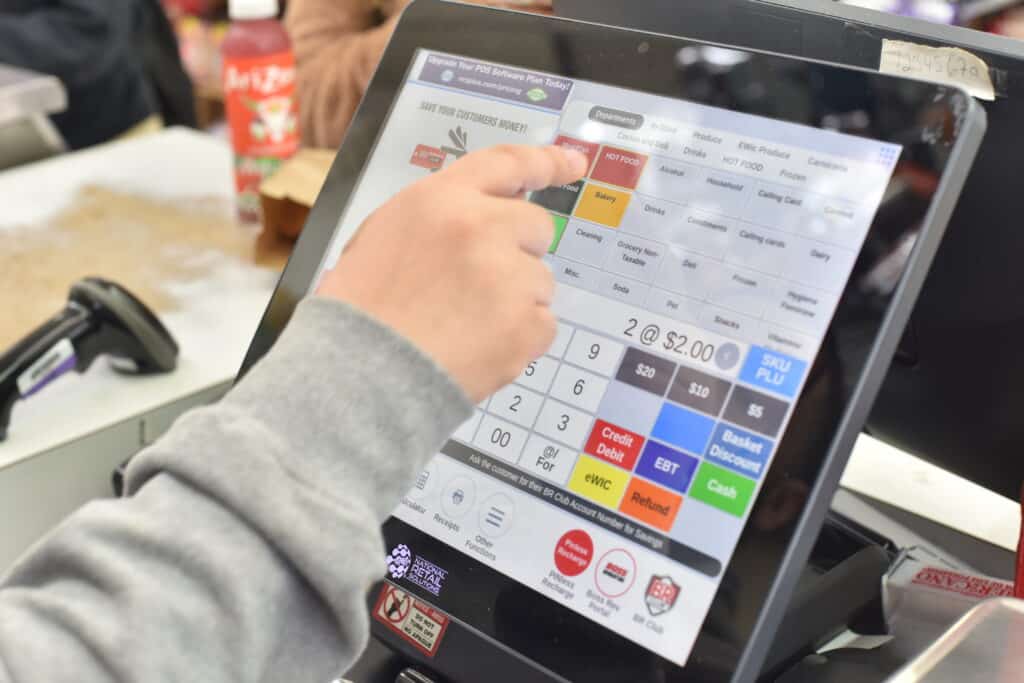What is Inventory Management?
Inventory management is when a business owner controls the amount of merchandise in-store and online. There are several factors to remember while tracking inventory, such as keeping hot-selling items on hand, avoiding over-ordering, and determining when to put products on clearance or markdown. Business owners may also want to implement efficient management tools, such as using ROI and a POS system through steady sales and maximizing shelf and display spaces. These suggestions can help owners become more organized and successful by giving them more control over their business. But where does one begin? Here we will go through topics such as stock that sells the most, taking note of slow-moving items, purging dead inventory, and making sure that your online and in-store are organized.Stock More of What Sells the Most
To start, business owners need to know what items sell the most and how to restock the appropriate inventory. To do this, you need the right POS system to help you sort out your items. National Retail Solutions (NRS), the leading provider of POS systems, has many prominent features, including inventory management, sales statistics, price book management, vendor payments, and remote monitoring. With these features, any owner can effectively manage sales and inventory without manually tallying stock, which would otherwise be a nuisance.Another tool business owners can use is the ROI method to calculate their company’s value. Return on investment (ROI) determines the company’s inventory cost. This is determined by noting which items are selling and how much the merchant is spending on merchandise. If a merchant is finding that they are spending too much on merchandise than receiving profit, they need to adjust their prices. Expenses such as investing in inventory, supplier costs, and other business expenditures can take a lot from a business owner. That’s why business owners need to ensure they are getting the right amount of money back. To determine how much was spent on merchandise is called a Gross Margin Return on Investment (GMROI). GMOI is a great indicator of if you are getting the balance you need between sales, margins, and stock cost. However, business owners seem to think holding onto more inventory just in case of high demand may be helpful when in fact, it can impact their bottom line. Still, by using an ROI, merchants can proactively predict and meet the demand for materials or merchandise.
Take Note of Slow Moving Inventory
If owners find that some merchandise is not selling off the shelves, they need to evaluate why this is happening. Perhaps they were last year’s fad and aren’t as popular anymore. Although, there are instances where popular items may not be selling either. If this is the case, business owners should consider how the items are placed and if they are properly marketed. The hot selling items should not be located near the back of your store, and they should be on end caps and other prominent areas, such as by the checkout aisle or with other top sellers.Purge Dead Inventory
To ensure that all merchandise is sold in the right fashion, owners must know how to market those items. As previously mentioned, placing items in certain areas is always a good idea to grab the consumers’ attention. However, sometimes it doesn’t have to do with the placement of items. In fact, it may have to do with the price itself. Some items may not be selling and are taking up space in the store, leaving no room for business owners to bring in new merchandise. In this case, business owners should mark down items to increase sales and make room for new items.Make Sure Online and In-Store are Synced
For those who sell their goods in brick-and-mortar locations, online, and through shopping apps, managing your merchandise is essential to increasing ROI. Ensuring that you have those products in stock in both locations will keep customers happy, whether they enjoy being in a physical store or prefer the convenience of online shopping. Business owners should also ensure that if they are running an ongoing sale, it is displayed in both online and in-person locations. That is why it is critical to sync both the online and in-person establishment so that the business owner can feel organized and customers can find what they are looking for without becoming frustrated.When it comes to a company’s inventory, there must always be a game plan to help minimize revenue loss and maximize ROI. One must go beyond what is suggested here and research more on how to best prepare for when there is dead inventory and how to make more items more marketable. Once you have that in place, it is best to have a game plan for the upcoming year for any product that may come your way. Inventory management is essential not only for you to keep yourself organized but also to keep a high ROI. A low ROI can lead to your company not making the necessary profits to stay afloat, resulting in revenue loss. So, knowing all of this, we are confident that you will make your company more successful than ever before. Remember to look into the NRS POS system to help you on your way to managing your inventory like a pro.








